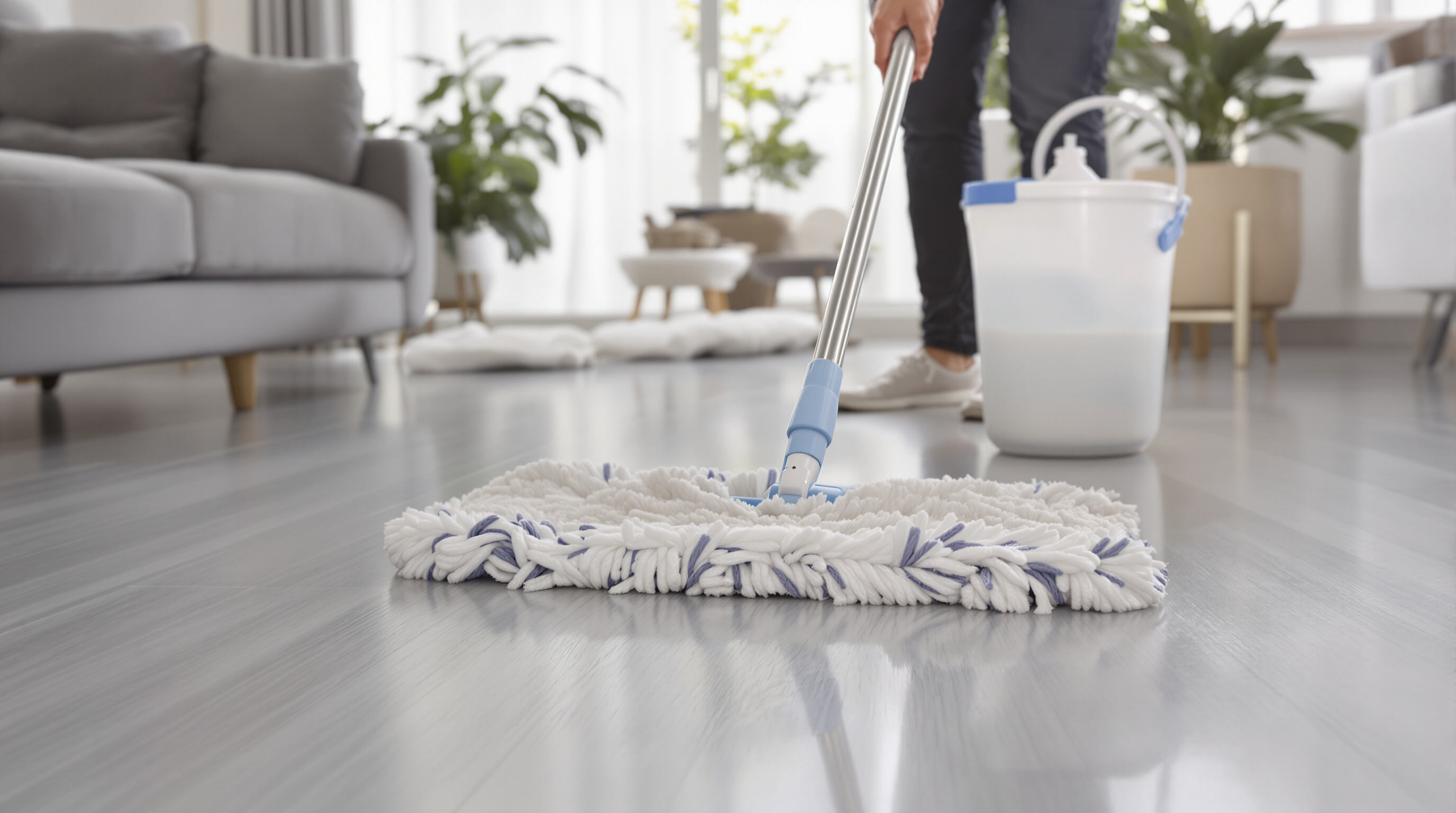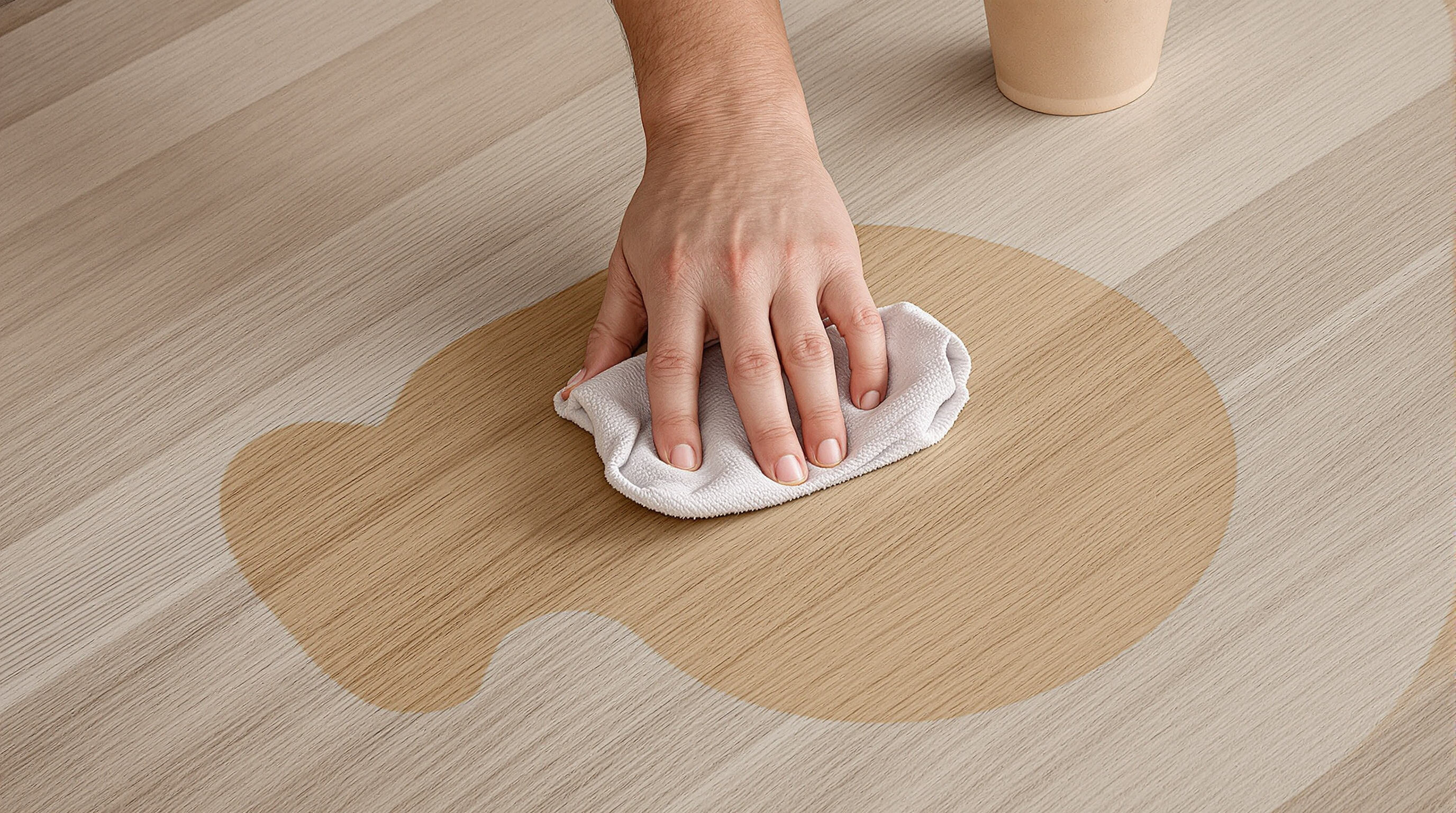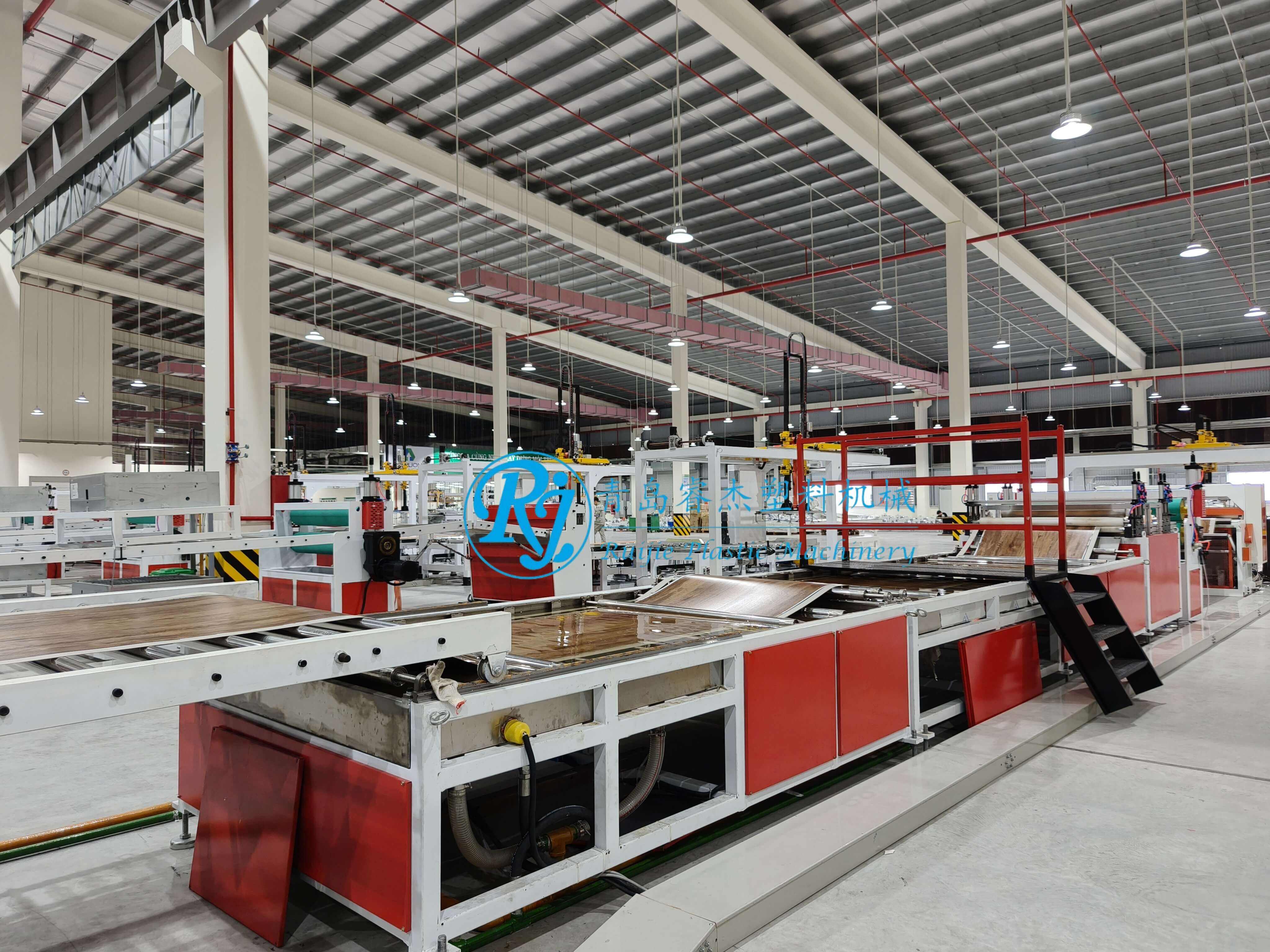Intellegentia Strata Elastica LVT et Curis Suis Unicis
Stratificatio vinylea luxuosa (LVT) hanc habet pulchram structuram multiplex stratificatam quae continet stratam superiorem ad protegendum, deinde secunda est pellicula decorativa monstrans schemata, et denique sedet super nucleum solidum infra. Quod facit LVT speciale est quomodo tractat humiditatem et lubricationem satis bene dum tamen durat per annos. Materia ipsa flectitur satis cum aliquis in ea calcit sed stabat plane ut interstitia molesta inter tessellas minus formantur. Tamen tibi hoc in mente habe, si homines eam male purgant vel aliquid asperum ad fricandum capiunt, superficies post tempus aliquod deformatum visu incipiet.
Quid Sit Strata Elastica LVT et Cur Cura Specialis Eiusdem
Tesserae vinclum luxuariae sunt stratae PVC superbae quae veram effigiem ligni aut lapidis imitantur, et etiam fortius contra ictus resistunt. Ex datis Instituto Scientiae Pavimenti anno praeterito allatis, durant circiter triplum tempus quod vinclum pavimenti vulgaris propter soliditatem suam. Tamen sunt quaedam quae vitam brevient: qui purgant vaporibus, vel nimis in usum venenum detergentis validi abutuntur, vel praecipua quae a manufactureribus praecipiuntur negligunt, texiturae superpositae UV protectionem laedunt. Tum coloris desipient et saepe ipsae tesserae deformantur.
De Munere Stratae Usurae in Protegendo Pavimento LVT
Stratum usurae, quod saepe 0.2–0.7 mm crassum est, praesidium contra ramenta, notae, et damna UV praebet. Stratum 0.5 mm, exempli gratia, usurae restitit 43% diutius in locis altius frequentatis (2023 Lapidum Durabilitas Commentarius). Hoc stratum etiam purgandi rationem determinat: solutiones alcalinae ultra pH 10 tectum attridunt, dum purgamenta pH-neutra nitorem et substantiam conservant.
Conformitatem Adherendo ad Fabricatoris Praecepta pro Optima LVT Pavimenti Functione
A praescriptionibus fabricatoris discedere — ut uti ceratis polituris aut asperis spongillis — potest ademptam fidem et usurae celeritatem efficere. Immo, 78% casuum praematurae LVT diffractionis ab incompatibilibus purgamentis proveniunt (Globalis Pavimentorum Societas 2023). Semper purgamenta ad pH accomodata utere et nimiam humiditatem vitare ad colligendi substantiam servandam.
Collocando purgationem mitis et ad normas technicas observandas, LVT pavimenta suam speciem et robustitatem per decennia conservant.
Consilia Prima de Purgando Cotidie Strata Elastica LVT
Mantentio Arida: Scopis et Strigis Aridis ad Impedendum Abrasionem Superficiem
Mantentio quotidiana incipere debet cum remotione corporum liberorum per scobam pilis mollibus aut striga pulvis microfibrae qualitatis bonae. Particulae harenae et similes asperrimae instar minutissimorum bitumen sanderorum fungebantur, quae paulatim superficiem proteguntam corroderunt. Pro locis illis frequenteratis ubi homines per diem ambulant, brevem strigitationem aridam matutinam et vespertinam facere 60 percentum diminuit secundum risum versus rem antractam relinquentem. Et memento uti vitare omnia cum pilis rigidis aut ferreis, quoniam hi creare solent illas minutas lineas quas omnes in pavimentis videre oderimus.
Purgatio Umidiorum cum Solutionibus pH-Neutris pro Mantentione Sana et Regulari

Cum siccatura facta est, prehende mop humectam et misce aliquid detergentis pH neutri secundum quod fabricator suadet. Cave ne longa tempora durant detergentia alcalina quae resident supra pH 10 quia ista corrodere possunt nucleum PVC. Rerum acidarum infra pH 4 non est optime quia faciunt superficies citius opacas. Periti in pavimentis anno 2023 compererunt, cum homines utens pH productis aequatis potius quam communibus detergents emendis, pavimenta splendent circa 18 mensibus amplius. Et ne obliviscaris mops istos satis exprimere antequam uteare. Aqua remanens vias suas in minutas interstitia inter tessellas invenit et tandem ad superficies tortas ducit, quas nemo postea videre vult.
Instrumenta et Producta Pulveris Recommandata pro Cotidiana LVT Pavimenti Cura
| Typus instrumenti | Formae Ideales | Vitare |
|---|---|---|
| Scobae | Capita Microfibrarum, pilis anti-staticis | Pilis ferreis/rigidis |
| Mops | Tapes microfibrarum texturae planae | Mops funiculares/coiled |
| Mundatores | Sine phosphatis, non-abrasiva | Ammonia/natrii hypochloriti |
Producta convenientia ASTM F3261-23 normas sunt comprobata a principibus fabricatoribus ad usum tutum in pavimentis vinclorum
Expedita Solutio Effusorum ad Evitandum Maculas et Nocentiam Humidi

Optimum est effusura absorbere intra circiter 15 minuta cum re aliqua absorbente sicut palla microfibrarum bonae qualitatis. Cum maculis oleosis aut coloratis, ut vinum rubeum vel atramentum, tenta pastam ex soda praeparare potius quam tergere. Si homines nimium diu exspectant ad purganda, materia saepe intrat in stratam protectivam superiorem. Secundum quoddam institutum de pavimentis anno 2024, circiter 42% substitutionum praecocium pavimentorum LVT coepit quia homines non celeriter purgarunt. Cavendum est de lapide spongia ferrea vel re aliqua cum acido quia superficiem laedunt
Purgatio Profunda Pro Strata Elastica LVT Sine Laesione
Quando et Quotiens Purgare Profunde Pavimenta LVT
Pro hauriente spatia vivendi, donare LVT pavimenta purgationem profundam sex ad duodecim menses intercedentes iuvat eas bene videri et flexibilitatem conservare. Sin autem de locis frequentatis agitur, ut in culinis ubi effusio cibi cotidiana evenit aut in vestibulis ubi calcei limum omnem portant, tum his locis fortasse saepius, inter trimeses et quattuor, cura indiget quia celerius sordent. Antequam solutionem aliquam purgandi arripis, incipe simpliciter cum scobinatione vel evaccumatione utens uno eorum membrorum setaceorum quae pavimentum non rident. Neque diutius quam necesse est apud loca obliterata vel maculas difficiles moreris, quia relinquentes eas diutius problemata permanens creare possunt. Emendatio celeris nunc dolorem capitis futuri tempus servat.
Purificatio Profunda Secura cum Detergentibus pH-Neutris et Rite Strigendo
Adhere ad purgamenta pH neutra adhibenda propter pavimenta vinclina, quia ammonium aut chlorum laqueum texiturum protegendi diuturnitate corrumpere possunt. Plurimi purgamentum suum diluunt circa unam partem ad 128 partes aquae tepidae, licet semper primum inspiciendum sit quid in ampulla scriptum est. Emunge penicillum microfibrarum bene ut siccum sit sed non nimis madidum. Areas parvas purga, circiter tria pedes latitudinis et longitudinis, uno tempore, tantum pressione adhibita quantum opus est ad rem conficiendam neque pavimentum nimis inrigandum. Si sunt maculae pertinaces, sinito purgamentum aliquot minutas operari priusquam iterum easdem maculas leniter iterum percurris. Et memento penicillum saepius lavare interdum, aliter omnis sordes iterum sparguntur potius quam tolluntur.
Methodi Vaciandi et Lavandi Efficaces pro Pavimentis Vinclina Luxuosis
| Gradus | Ferramentum | Technica |
|---|---|---|
| 1. Tollere Inquinamenta | Pennae Vaciandi Subtilis Pilosae | Lente glisce ut pulvis colligatur sine laedendo |
| 2. Prae-Treatmentum | Textile Microfibratum | Maculas viscosas locatim purga cum diluto detergente |
| 3. Lavatio | Penicillum texturae planae | Torque donec paene siccus sit; move in plagis parallelis |
Haec ratio efficiat purgationem effectivam dum tamen stratum usurae a penetratione humoris tegit.
Cur Mopae Vapores et Aqua Nimia LVT Nocent: Necessaria Facienda et Non Facienda
Mopae vaporis LVT ad temperaturas ultra 120°F exponunt, vincula glutinosa debilitant et separationem tesserarum periclitantur. Nimius humor in iuncturas insinuatur, potestque curvare tabulas aut fimum generare — 1 de 5 casibus LVT defectus damno aquae attribuitur. Potius:
- Fac : Sume effusiones mox cum panno siccato.
- Noli : Aque permitti ut plus quam 5 minuta colligatur.
- Fac : Utere ventarum oscillantium ad siccandum celerius post moppam.
- Noli : Noli apponere ceras aut polituras oleosas — hi terram trahunt et vim frictionis minuunt.
Malle purgamenta spargenda et tergenda pro straminis usitatam servare claritatem et tutitudinem.
Stirpes Tollere et Minora Damna Reparare in Pavimento LVT
Stirpibus Communibus Obtingere: Adeps, Atramentum et Notae Frictionis in LVT
Pavimenta LVT proclivis sunt tolerare fere omnia effusionum genera si modo cito agamus, licet quaedam sordes specialem curam postulent. Cum de maculis adipis agitur, statim pannum microfibrum arripere et sternere debes donec siccus sit, deinde sequere cum aliqua re neutra pH ad purgandum. Maculae atramenti aliter se habent – ad eam rem 70% alcoholi fricando uti debes et id in molli panno adhibere antequam leniter in maculam verberas. Pro illis autem notis frictonis molestis? Interdum simplicis spuma melaminica mirabilia praestat, vel etiam vetus pilula tenis per aream infectam rotata optime iuvat. Tamen memento ne furens cum abrasivis sclopetis fricandis utare quia tantum facies ut pavimentum deterius videri incipiat tempore.
Purgatio Profunda Pro Maculis Intrinsecis Sine Daminificando Superficiem
Cum difficultates istas cum caffea aut vino rubro sparsas agis, conare pastam ex soda bibendi parare, miscentem circiter unam partem aquae ad tres partes sodae. Hanc massam super maculam circa quinque minuta sinito, priusquam bene enixeque lavas et exsiccatur. Si qua materia oleosa adhuc remaneat, adhibe deoleantem ex citro et eum in superficiem adhibe, leniter circulando cum spongia mollis, quae nihil laedet. Antequam aliquid vehementius adhibes, semper in loco occulto cito proba. Quidam purgamenta valde aspera subtiliter plasticum subiacens ledere possunt, nisi caveamus.
LVT-specificis Reparationis Kits Ad Corrigendum Lineas et Scabras
Minores rascinae infra 0.5mm cum ceris reparandis coloris tui pavimenti commisceri possunt. Maiora foramina requirunt acrylica plasmata cum spatula plastica et 24 horis indurandis. Pro tabulis cum damno structurale, substitutio commendatur. Relinque tesseram ex installatione pro coloris commiscendo sine saltu.
Mantentia preventiva ad Vitam LVT Pavimenti Elasticum Extendendam
LVT Protegendum a Rascinis et Cavis cum Tampone Mobilium et Tapetis
Mobilium ponderosum 38% damni LVT preventabilis causat (Loci Indagatio 2023). Utere tampone felti sub sedis cruribus, protecctoribus rubber sub machinis, et tapetis textis in locis altius frequentatis ut superficiem tuearis. Rotare tapetes areales secundum tempora ut aequaliter distribuas usum.
Detergendi Producta Elegendo ut Degradatio Chemica Vitetur
Ammoniaca et candida dissolvunt stratam protectivam LVT, augendo periculum tincturae. Detergentia pH-neutra, quae a fabricante probata sunt, abradunt chemice 67% minus quam alternativae vulgares (Material Safety Study 2022). Semper nova producta in locis occultis ante usum totalem proba.
Consilia Curae Specializatae pro Locis Commeatibus Altis cum Implantatione LVT
In vestibulis mercatorialibus et corriidoribus domesticis emunctio siccus cotidiana et purgatio profunda bis hebdomada utilia sunt ad pulverem colligendum. Strofili limosis aditus ponendi sunt ad 83% impuritatum foris retinendas. In zonis crebro utendis, liniamenta polimenti compatibilis iterum applicentur omnibus sex ad duodecim mensibus ad stratam usum protegendam.
Saepe Interrogata Quaestiones
Ce este pardoseala LVT?
Luxury vinyl tile (LVT) flooring est genus pavimenti resilientis, quod vultum materiae naturalis sicut lignum et lapidem imitatur, structura multiplex stratam praebente durabilitatem et resistentiam ad humorem.
Num purgatores vaporem uti possum in pavimento LVT?
In generali non est consilium uti vaporis purgatoribus in pavimentis LVT quia possunt laedere tectum UV et vincula glutinosa, quod ducere potest ad distorquendum vel separationem laminarum.
Quotiens oportet me purgare profunde pavimentum LVT?
Purgo profunda pavimentorum LVT oportet fieri semel sex mensibus aut duodecim mensibus in plerisque locis, sed loca cum multa frequentatione fortasse requirunt hoc ter vel quater in anno.
Quae sunt purgamenta idonea pro pavimentis LVT?
Utere purgamentis pH-neutralibus et non-abrasivis quae propria sunt pro pavimentis LVT. Vitare oportet ammoniam et productos cum chloro quia possunt tectum protegendi detergere.
Quomodo possum emendare leves rasciones in pavimento LVT?
Uti potes cum instrumentis specialibus pro pavimento LVT, quae continent virgas ceratas aut materialem acryllicum pro fodiis profundioribus. Optimum est ut color emendationis respondeat colori pavimenti tui.
Index Rerum
- Intellegentia Strata Elastica LVT et Curis Suis Unicis
- Consilia Prima de Purgando Cotidie Strata Elastica LVT
- Mantentio Arida: Scopis et Strigis Aridis ad Impedendum Abrasionem Superficiem
- Purgatio Umidiorum cum Solutionibus pH-Neutris pro Mantentione Sana et Regulari
- Instrumenta et Producta Pulveris Recommandata pro Cotidiana LVT Pavimenti Cura
- Expedita Solutio Effusorum ad Evitandum Maculas et Nocentiam Humidi
- Purgatio Profunda Pro Strata Elastica LVT Sine Laesione
- Stirpes Tollere et Minora Damna Reparare in Pavimento LVT
- Mantentia preventiva ad Vitam LVT Pavimenti Elasticum Extendendam
- Saepe Interrogata Quaestiones

